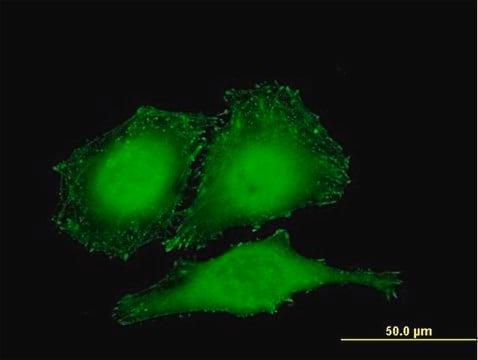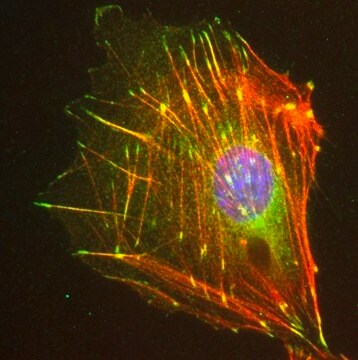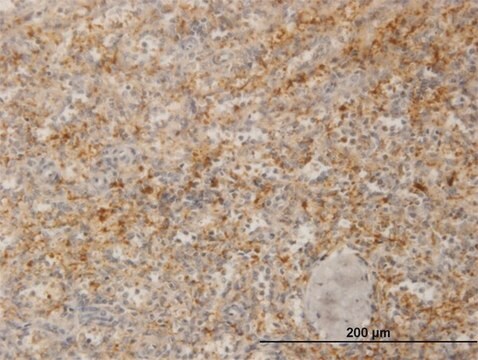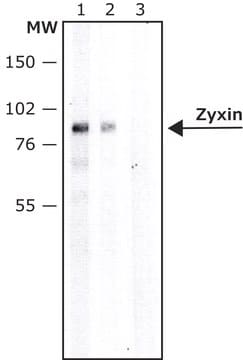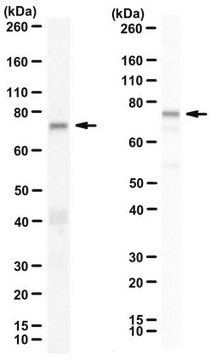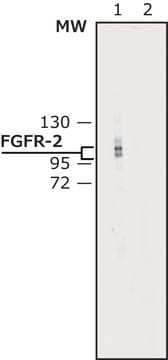MAB2610
Anti-Zyxin Antibody, clone 14E11.1
clone 14E11.1, from mouse
Synonym(e):
Zyxin2, Zyxin, Zyxin-2
About This Item
Empfohlene Produkte
Biologische Quelle
mouse
Qualitätsniveau
Antikörperform
purified immunoglobulin
Antikörper-Produkttyp
primary antibodies
Klon
14E11.1, monoclonal
Speziesreaktivität
human, mouse, rat
Methode(n)
immunocytochemistry: suitable
western blot: suitable
Isotyp
IgMκ
NCBI-Hinterlegungsnummer
UniProt-Hinterlegungsnummer
Versandbedingung
wet ice
Posttranslationale Modifikation Target
unmodified
Angaben zum Gen
mouse ... Zyx(22793)
Allgemeine Beschreibung
Immunogen
Anwendung
Zellstruktur
Cytoskelettale Signalübertragung
Qualität
Western Blot Analysis: 0.5 µg/mL of this antibody detected Zyxin in 10 µg of HUVEC cell lysate.
Zielbeschreibung
The calculated molecular weight is 61 kDa Zyxin is a phosphoprotein with an apparent molecular weight of 82–84 kDa (van der Gaag, E., et al. (2002). Journal of Investigative Dermatology. 118:246–254.). As a substrate of caspases, Zyxin can be cleaved as 30, 37, 48 and 70 kDa (C-B Chan, C-B., et al. (2007). Cell Death and Differentiation. 14:1688–1699.)
Physikalische Form
Lagerung und Haltbarkeit
Hinweis zur Analyse
HUVEC cell lysate
Sonstige Hinweise
Haftungsausschluss
Not finding the right product?
Try our Produkt-Auswahlhilfe.
Empfehlung
Lagerklassenschlüssel
12 - Non Combustible Liquids
WGK
WGK 2
Flammpunkt (°F)
Not applicable
Flammpunkt (°C)
Not applicable
Analysenzertifikate (COA)
Suchen Sie nach Analysenzertifikate (COA), indem Sie die Lot-/Chargennummer des Produkts eingeben. Lot- und Chargennummern sind auf dem Produktetikett hinter den Wörtern ‘Lot’ oder ‘Batch’ (Lot oder Charge) zu finden.
Besitzen Sie dieses Produkt bereits?
In der Dokumentenbibliothek finden Sie die Dokumentation zu den Produkten, die Sie kürzlich erworben haben.
Unser Team von Wissenschaftlern verfügt über Erfahrung in allen Forschungsbereichen einschließlich Life Science, Materialwissenschaften, chemischer Synthese, Chromatographie, Analytik und vielen mehr..
Setzen Sie sich mit dem technischen Dienst in Verbindung.
